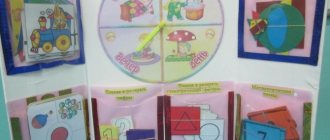Creating the letter A
The Phoenicians did not come up with the letter A themselves. They were a people of seafarers. They brought with them the best and most progressive things from all the countries they visited.
They even borrowed letters.
Previously, the inhabitants of the East marked every thought in the form of an icon. Short and clear. They liked the sign with outline A and was also included in the list of commonly used signs.
And since the letter was actually lying on its side, it could easily pass for a hieroglyph.
It was only later that the letter was turned over and put on its feet. In this form, it has reached our lands and the Cyrillic alphabets. To this day it is not known where the letter A came from.
But we are sure that if it had not once been borrowed by ancient sailors, then perhaps we would now use hieroglyphs as an alphabet, like all normal ancient Egyptian and Chinese people.
Phonetic warm-up with sound A
A very useful exercise is to practice phonetics using special audio files. The recording is made using one single sound A in different configurations. This exercise helps control auditory perception.
For example, A AA AAA AAAA AAAAAAAAAAAAAAA AAAAAAAAAAA AAAAAAAAAAAAAA AAAAAAAAA A AA A AA AAA AAAA AAAAAAAAAAAAAA AAAAAAAAAAA AAAAAAAAAAAAAA A A AA A AA AAA AAAA AAAAAAAAAAAAAAA AAAAAAAAAAA AAAAAAAAAAAA AAAAAAAAA AA A AA A AA AAA AAAA AAAAAAAAAAAAAAAAAA AAAAAAAAA AAAAAAAAAAAA AAAAAAAAA A AA A AA AAA AAAA AAAAAAAAAAAAAAA AAAAAAAAAAA AAAAAAAAAAAA AAAAAAAAA AA A AA A AA AAA AAAA AAAAAAAAAAAAAAAAAA AAAAAAAAA AAAAAAAAAAA AAAAAAAAA A AA AAAAAAAA
Try repeating the following songs after the speaker.
Sound production and automation [A]
Since the sound [A] is considered a mid-range lower rise, it has its own sound characteristics.
Articulation of isolated sound [A] is normal
When a person (of any age) does not have any speech defects or disorders, then while pronouncing the sound [A] (one, not in a syllable, not in a word, but simply A), the lips should be in a relaxed state, free.
They do not change their position in any way (passive).
The mouth is open.
The upper incisors are located 2 cm from the lower ones.
The tongue is also in a free position without movement at the very bottom of the oral cavity.
Only the tip of the tongue near the lower incisors, the back of the tongue in the lower elevation position.
The palate is slightly raised, the velum palatine is in contact with the back wall of the pharynx, closing the passage into the nasal cavity.
The sound [A] is oral.
The vocal cords close and the voice begins to vibrate, creating a vocal sound.
If you observe the process in the mirror, you can clearly see the position of the lips, the tips of the incisors, and you can see a little in what position the tongue is.
When pronouncing the sound [A], the mirror fogs up.
By placing your palm on the larynx, you can feel it vibrating. A slight vibration is also felt in the sternum area.
These are indicators of normal sound pronunciation [A].
Elimination of incorrect articulation A
If there are any violations, then it is necessary to begin work specifically to establish correct articulation.
The adult shows all the positions of the oral organs in the picture, on himself and controls the position of the students on their mirrors.
After the position of the organs is fixed, the following stages of work occur:
- Select a number of words in which the sound [A] is in the stressed position.
- Give an example of correct pronunciation. The learner must perceive the word, i.e. auditory-visual perception must be established. Visual and auditory visual aids are used.
- Make words by breaking them into syllables.
- Division into sounds, working with sound in isolation.
- Then phonetic gymnastics (rhythmics) is carried out - working with breathing, placing the tongue near the lower incisors, working with the voice.
Possible defects
- A=E (meme). Sometimes it happens that a child writes the alphabet, but cannot pronounce even such a simple sound [A]. Perhaps the back of his tongue is too elevated, and his mouth does not open enough, which is why the incisors are very close to each other.
- A=I. When working in front of a mirror, try to keep your tongue flat and not pull it inside your mouth. If the child is unable to do this, take a spatula and lightly press on the back of the tongue.
- A=Y (mymy) - deep sound. The tip of the tongue is pulled too much inward, the tongue folds into a lump. The correction is the same as for A=E. If it is difficult, then suggest bringing the tip of the tongue closer to the incisors and in this position try to pronounce [A].
- A=O. This defect is caused by improper lip position. Correction: only repeated imitation and articulation exercises.
- Open nasality appears when the velum is lowered. In this case, the voice is not involved, only the lips work. To eliminate such a violation, you must first explain what the child is doing wrong. Imitation and exercises for a firm attack will help (we speak abruptly, articulation is tense). The effect can be achieved using the conducting method. Then the palatal curtain will rise reflexively. We gradually move on to the drawn-out A, A, A....
Speech game "Ladder"
Goal: to teach to determine the place of the sound A in a word.
Equipment: drawn ladder and toy.
If two or more participants are playing, then toys are distributed to everyone, and more words are selected.
Progress of the game: words are called (for more players, prepare more words), and players must move the toys up a certain number of steps.
- If the sound A is at the beginning of a word, it goes up one step.
- In the middle there are two steps.
- At the end - up three steps.
- If there are two A sounds in a word, it goes up four steps.
The words are called out to each player in turn.
The winner is the one who named the position of the sound correctly in all words and rose the highest on the steps.
To ensure that everyone is on an equal footing, each player has his own set of words with the same A positions.
If the answer is given incorrectly to any word, then the toy moves down one step.
You can play for a long time until the players get tired and the host runs out of words.
You can make them up as you go.
History of the origin of the letter A
The Phoenicians were the first to use the letter A. Their alphabet began with “alef”.
It was written almost like our letter A. Only its position was lying to the left.
And the crossbar was a little closer to the top of the triangle.
This outline resembled a bull's head. The Phoenicians revered bulls as a holy animal.
The very sound that began the alphabet and was transmitted by this letter sounded like a guttural consonant.
And it was not a vowel at all among the Phoenicians.
In Cyrillic, the letter A was immediately written in the same way as we now write a small “a”. Look at the pictures.





